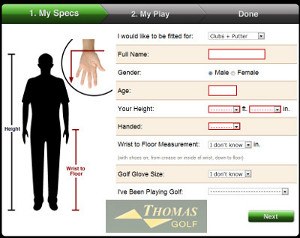Golf Club Fitting
Golf club fitting is the process of customizing golf clubs to suit an individual player’s swing characteristics and physical attributes. It involves various measurements and assessments to determine the optimal club specifications that will enhance a player’s performance on the golf course. Club fitting is essential for both beginners and experienced golfers as it can significantly improve accuracy, distance, and consistency in their shots.
- Why is club fitting important?
- Improves accuracy: A well-fit club ensures that the player has the correct lie angle, loft, and clubhead design that work harmoniously with their swing to produce accurate shots.
- Enhances distance: The right club specifications, such as shaft flex, length, and weight, allow the golfer to generate more clubhead speed and transfer energy efficiently, resulting in increased distance.
- Boosts consistency: Consistency in shot-making is crucial for lower scores. A club fitting helps achieve consistency by ensuring that the equipment is suited to the player's swing mechanics and preferences.
- Prevents injury: Properly fitted clubs can help prevent golf-related injuries as they promote a more natural swing motion and alleviate stress on the player's body.
- The club fitting process:
- Interview and assessment: The fitting process begins with a detailed interview, where the fitter gathers information about the player's goals, playing style, and current equipment.
- Physical evaluation: The player's height, arm length, hand size, and other physical attributes are measured, which influence club fitting decisions.
- Swing analysis: Using launch monitors and video analysis, the fitter evaluates the player's swing speed, attack angle, club path, and impact conditions for each club.
- Club selection: Based on the gathered data, the fitter recommends specific club models, shaft types, lengths, lofts, and lie angles that would best suit the player.
- Testing and adjustments: The player tries out the recommended clubs on an indoor or outdoor range to assess their performance. Any necessary adjustments, such as shaft flex or lie angle tweaking, are made to optimize the clubs' performance.
- Finalizing the fitting: After testing and adjustments, the player's final club specifications are determined. The fitter may also discuss custom options, such as grip type, to further enhance the player's comfort and control.
- Where can you get club fitting?
- Pro shops at golf courses often have certified club fitters who can guide you through the process.
- Specialty golf stores and golf academies also offer professional club fitting services.
- Some golf club manufacturers have their own fitting centers or provide fitting services at selected retail locations.
- When should you get club fitting?
- When you are new to golf and want to start with the right equipment from the beginning.
- When you notice inconsistencies in your shots or a decline in performance.
- When you undergo significant changes in your swing mechanics or physical attributes.
- When you are looking to purchase new clubs or upgrade your existing set.
Conclusion: Club fitting is a crucial aspect of the game that can significantly improve a golfer's performance and enjoyment. By customizing clubs to suit an individual's swing characteristics, physical attributes, and preferences, club fitting ensures a more accurate, consistent, and enjoyable golfing experience.






